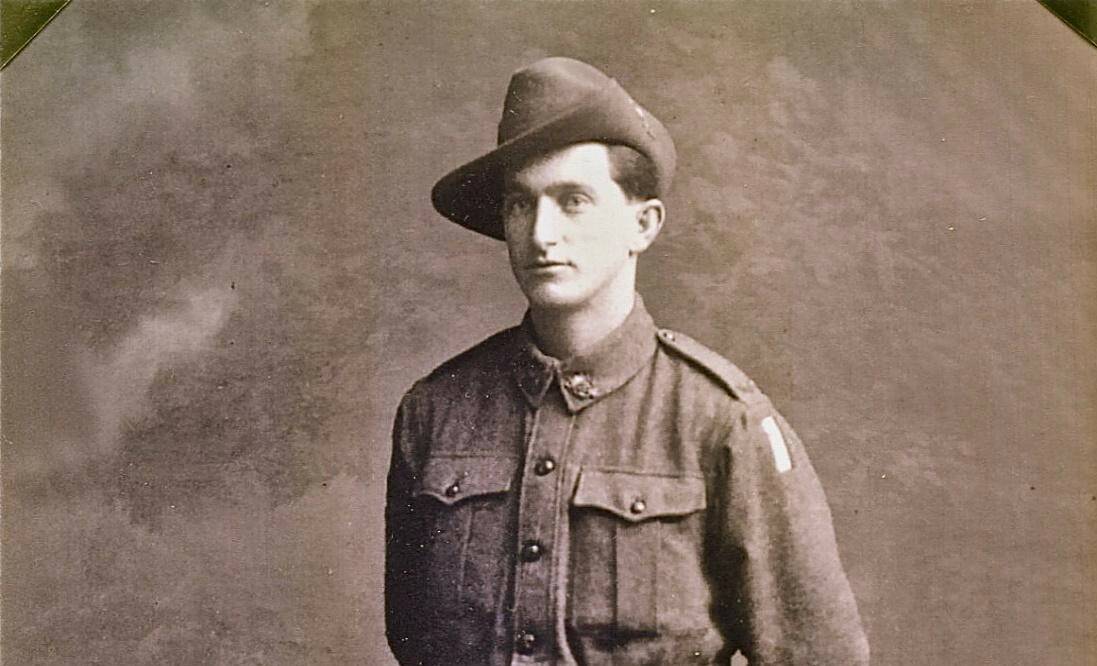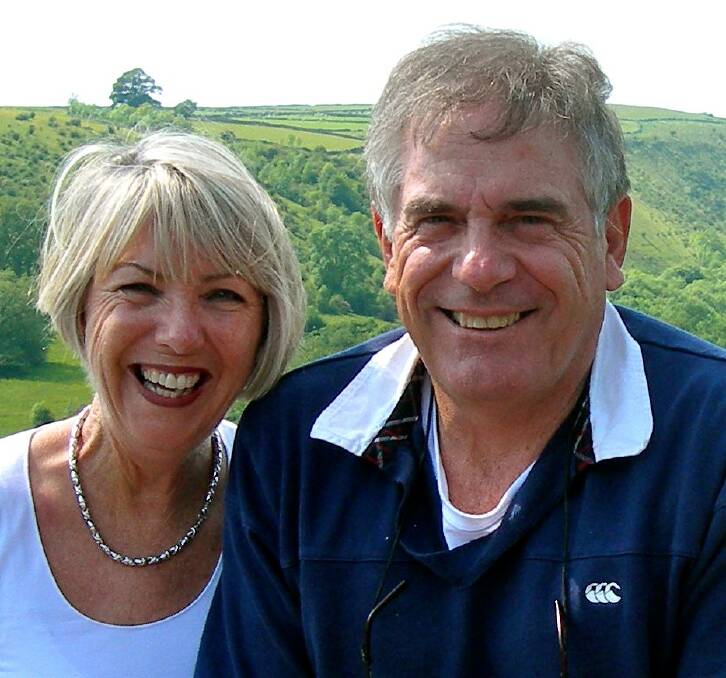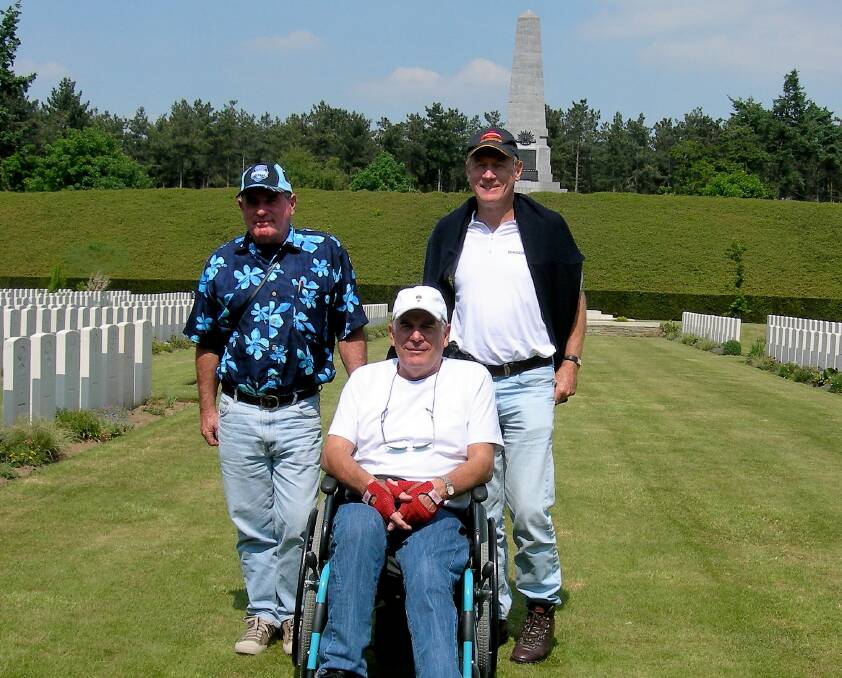
In the lead up to Anzac Day 2018, Great Lakes resident, Roger Lynch has shared the story of an Australian war hero; his father, Thomas Lynch who fought on the Western Front in 1917–1918.
Subscribe now for unlimited access.
$0/
(min cost $0)
or signup to continue reading
In honour of his father’s memory, Roger compiled a biography, to preserve his legacy and the family’s history.
Sharing some of the stories from his father’s time in the army, Roger said the most enduring memory he have of my father is his unwavering honesty.
“He told the story of playing poker with his army mates in France when he drew a royal flush, and rather than encourage more betting from the other players, he laid down his hand,” he said.
“He considered that betting on a sure thing was almost like stealing. His honesty and integrity were strong legacies left to his three sons.”
The following are excerpts from Roger’s biography of his father’s time on the Western Front.
Villers-Bretonneux – April 1918
Tom returned from leave on April 4. During the next few days of April the Battalion was stationed at Louvencourt, about 35kms north-east of Amiens. The four companies of the 56th relieved companies of the 55th Battalion on the front line.
They were magnificent. Nothing seemed to stop them. When our fire was heaviest, they just disappeared in shell holes and came up as soon as it slackened.
- A German officer - of the Australian army
On April 5 the 14th Brigade was notified that heavy enemy action was taking place east of Amiens.
It was apparent that the enemy’s objective was to take this strategic city. The Battalion was ordered to proceed by bus and march to the village of Aubigny, just south of the Somme River and about 15kms east of Amiens.
From Aubigny the 56th advanced over open fields to a position about 1km north of Villers-Bretonneux. The village of Villers-Bretonneux was a valuable strategic objective of the German army as it was situated on slightly higher ground than the surrounding countryside.
Information gleaned from captured enemy soldiers indicated that the village was to be attacked and occupied by the Germans any day.
Again the 56th and the 55th took turn-about to occupy the forward trenches. Heavy shelling by the enemy took its toll on the men, with many killed and wounded during this time.

By April 19 the shelling of the village of Villers-Bretonneux and the defence trenches intensified. Over the next three days the German shelling was predominantly gas. The calm cool weather ensured that the gas lay throughout the village and low areas for some time. Many men from the 14th Brigade suffered badly from the enemy’s gas attacks.
The German attack on Villers-Bretonneux came in the early morning of the 24th. The Germans forced back the British troops and occupied the village. The 14th and 15th Australian Brigades immediately took up forward position to the north of the village for defence or counter-attack. The next evening the orders came to counter-attack immediately.
The Australian plan was for a surprise night attack, with no preliminary artillery bombardment. Two battalions (the 51st and 52nd Battalions, about 1,500 men) of the 13th Brigade, 4th Division, would attack to the south of Villers-Bretonneux towards the east. Three battalions, the 57th, 59th and 60th Battalions, about 2,400 men of the 15th Brigade, 5th Division, would similarly attack from the north of the town towards the east and then swing south–east to the old Roman road heading out of Villers-Bretonneux. Thus the Germans would be encircled and trapped.
They were like ants, rising out of their holes (trenches), scampering across no-mans- land, with so many being quickly stopped in their tracks.
- Thomas Lynch
The plan was brilliantly planned and executed. Villers-Bretonneux was quickly retaken from the Germans. A German officer was later quoted as saying about the Australians:
“They were magnificent. Nothing seemed to stop them. When our fire was heaviest, they just disappeared in shell holes and came up as soon as it slackened. When we used very lights they stood still and were hard to see.”
Australians Hold the Line – May 1918
On May 1 the 56th Battalion relieved the worn-out 55th on the front line to the east in the Le Hamel Sector, with each company taking it in turns to man the Front Line, the Support Line and the Reserve Line. These three lines of defence were about 500 yards apart.
On May 2 the 13th, 45th, 46th and 47th Battalions attacked German positions to the east of They were magnificent. Nothing seemed to stop them. When our fire was heaviest, they just disappeared in shell holes and came up as soon as it slackened with the objective of taking Monument Weed and a chateau occupied by the German command.

A French division launched a simultaneous attack to the south of the village. Notwithstanding support from two British tanks, heavy machine gun fire eventually forced the Australians to retire. It was later discovered that the Germans had reinforced their lines in that sector with fresh troops. The chateau was captured, but subsequent withdrawal was necessary as reinforcements were not available.
Tom told his sons about being in trenches on Hill 104, near the site of the Australian War Memorial. From here he had a view of the village of Villers-Bretonneux, or what was left of it, to the south and the flat plains of the Somme Valley to the north.
He told of seeing Tommies going “over-the- top” several miles to the north.
“They were like ants, rising out of their holes (trenches), scampering across no-mans- land, with so many being quickly stopped in their tracks, then as their numbers dwindled, the few remaining retreated back to their original trenches,” he said. It was such a futile waste of young men’s lives.
When Tom’s sons and their wives visited Villers-Bretonneux in 2008 they stood in the very trench that Tom occupied 90 years earlier.
Péronne – September 1918
On August 31 the Battalion received notice that the 5th Brigade (2nd Division) had crossed the Somme River under fire and successfully cleared the strong enemy defences at Mont St. Quentin on the North Eastern outskirts of the strategic town of Peronne. The enemy immediately counter-attacked and retook the hill. This was vitally strategic high-ground.
The 14th Brigade was hurriedly moved from the th Division reserve lines to cross the pontoon bridge over the SOMME to assist the 6th Brigade (2nd Division) in a renewed attempt against Mont St. Quentin. The attacks on Mont St. Quentin were hampered by the lack of artillery and tank support. The rapid advances made over the previous week or so over rough open ground had meant that most of the artillery and the tanks could not keep pace. The hill was eventually retaken after some extraordinary gallantry from Australian 6th Brigade on September 1. The cost of the Mont St. Quentin victory was 3000 Australian casualties.
After crossing the river, the 56th Battalion followed the 54th, skirting Mont St. Quentin and taking up assembly positions astride the Clery-Peronne Road in preparation for an attack on Peronne the next day.

The 53rd and 56th Battalions led the assault on Peronne from the north. The fighting was intense and bloody, with 5.9 (150mm) shells raining down on the men as they advanced across open ground. The raking heavy machine gun fire from the fortified positions in Peronne and from Mont St. Quentin, which had not yet been retaken, to their left and rear swished through the air.
Tom’s “A” company was given the task of helping to clear Anvil Wood and then attack the railway huts on the edge of town. Anvil Wood was soon cleared, albeit with many casualties as they passed through machine gun protected barbed-wire barriers. The company was held up when it reached the huts and had to dig-in in a nearby cemetery.
Word was received that the 54th Battalion had successfully fought its way into the township of Peronne.
At 1pm word was received that the 6th Brigade had finally stormed the summit of Mont St. Quentin and routed the German positions. This action effectively saved the assault on Peronne, as not only did it stop the machine gun fire from their flanks, but it allowed allied shelling of the enemy positions defending Peronne from this high ground.
Tom’s Battalion was expecting to be ordered to renew the attack, but orders were received instructing them to move back to a position ready for an attack on the nearby village of St Dennis. That evening they lay out in the open or in shallow excavations. The German artillery zeroed in and resulted in many more casualties.
“A” company suffered heavy casualties during this action. It had lost all its officers leaving Sgt O’Connor in command. He was later awarded the VC for his gallantry on this day. The 14th Brigade lost half its men.
Tom suffered serious shrapnel wounds to his back and elbow when a shell burst behind his platoon as it was moving back from the front (Editor’s note: Tom carried steel shrapnel in his back and elbow for the remainder of his life, much to the consternation of security officials at airports). This was described as a “Blighty Wound” by the diggers, that is, not serious enough to kill you, but bad enough to be shipped back to England for hospitalisation.
This proved to be the end of the war for Tom. After the Australians successfully routed the Germans from Peronne, St Dennis and Flamicourt, the enemy was in full retreat. Armistice was signed on November 11.

